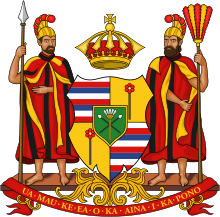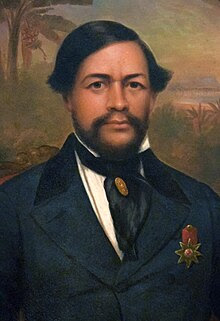
Hawaiian Kingdom/Kingdom of Hawaii/
Ko Hawaii Pae Aina/Me ka Mokupuni Pae Aina o Hawaii/Hawaiian Islands/
Hawaiian archipelago/Hawaii
from the desk of Amelia Gora, Acting Liaison of Foreign Affairs,
House of Nobles, Judicial Tribunal, Hawaiian Genealogical Society member, Konohiki
To: President Barrack Obama
Governor Ige
Mayor Caldwell
Honolulu Police Department - Police Chief et. als.
Sheriff's Department
Many interested others
Greetings!
Re: Konohiki Amelia Gora, et. als., Assistant Konohiki Kalani Asam -
Assignment: Palace, Iolani Palace
Assistant Konohiki Kalani Asam's Companions John Remis, Dustin Barca, and Che Free at the Palace, Iolani Palace
Honolulu, Oahu, Hawaii
This is to inform all that I, Amelia Gora, am one of the assigned Konohiki of the following ancestors, land areas:
I, Amelia Gora, am one of the Konohiki for Kamehameha III - Kauikeaouli, Mataio Kekuanaoa, Victoria Kamamalu, W.P. Leleiohoku, Nuuanu (k), John Kapena (k), Grace Kamaikui (w), Kalola (w), Kaaha (k), Luluhiwalani (k), which includes areas covering the Palace, the Iolani Palace, etc.
On February 18, 2015, Wednesday, Kalani Asam, kanaka maoli, was appointed our Assistant Konohiki assigned to the Palace, Iolani Palace.
Kalani Asam's companions, who are non kanaka maoli, named John Remis, Dustin Barca, and Che Free have been given Protective Orders effective February 19, 2015 on a month to month basis, a status less than Assistant Konohiki Kalani Asam.
Assistant Konohiki Kalani Asam and companions are assigned a 24 hours 7 days a week schedule at the Palace, Iolani Palace.
Keys to the rest rooms are hereby requested for our/their toiletry needs while residing on the premises of our Royal Families.
The keys will be held by other Konohiki, including myself. and a copy of the key will be assigned to Assistant Konohiki Kalani Asam.
My e-mail: theiolani@gmail.com
aloha,
Amelia Gora, one of Kamehameha's, Kalaniopuu's, Kaumualii's, Princess Poomaikelani's, Akahi(w), Kalola(w) - next of kin of Bernice Pauahi Bishop- et. als. descendant/heir
References:
Konohiki meaning:
Konohiki
From Wikipedia, the free encyclopedia
A konohiki is a headman of a land division or ahupua`a of the Kingdom of Hawaii who administered the land ruled by anali'i chief.[1][2]
Background[edit]
The lands of the Ruling chiefs of Hawaii were divided into radial divisions of land when possible. These divisions were under the control of other smaller chiefs and managed by a steward.[3] Land was divided up in strict adherence to the wishes of the Ali‘i Nui. The island was called the mokupuni and was split into several moku. The moku (district) parameters ran from the highest mountain top, down to the sea. These divisions were ruled by an aliʻi ʻaimoku who would have been appointed by the ruling chief. Each of these mokus were further split into ahupuaau, named after the dividing boundry alter where taxes were collected for each area during the Makahiki. Each ahupuaau was then run by a headman or chief called a Konohiki.[4]
In Keelikolani vs Robinson, the term is also defined as a Land Agent. In Territory vs Bishop Trust Co. LTD., when the agent was appointed by a chief they were referred to by the title of konohiki. When referring to the titled person as Konohiki, this meant that they were charged with the care of the division of land for the king or nobility the land was awarded to. The term could also be a designated area of land owned privately as compared to being owned by the government.[5] A chief of lands could not lose life tenure on the land even after being discharged from the position, but a head man overseeing the same land has no such right.[6]
Often ali'i and konohiki are referenced together however, while most or all konohiki were ali'i nobility, not all ali'i were konohiki. The Hawaiian dictionary gives the definition as a headman of a land division, but it is also used in describingfishing rights as well. The term when broken in two parts is as follows: Kono being defined as to entice, or prompt and hiki defined as something that can be done. The konohiki was a relative of the ali'i and would oversee the coordination of the property, including water rights, land distribution, agricultural use and any maintenance. The Konohiki would also make sure the right amounts of gifts and tributes to the ali'i were properly made at the right times.[7]
As capitalism was incorporated into the kingdom the konohiki would become the tax collectors, landlords and wardens over the fisheries.[7]
References[edit]
- ^ "Ahupua`a". HawaiiHistory.
org. Info Grafik Inc. Retrieved 2 June 2014. - ^ "konohiki". Merriam-
Webster dictionary. Merriam-Webster, Incorporated. Retrieved 2 June 2014. - ^ Kircha, P.V. (1990). "Monumental architecture and power in Polynesian chiefdoms: A comparison of Tonga and Hawaii". World Archaeology 22 (2).
- ^ e. Craighill Handy (15 December 1989). Ancient Hawaiian Civilization: A Series of Lectures Delivered at THE KAMEHAMEHA SCHOOLS. Tuttle Publishing. p. 71. ISBN 978-1-4629-0438-9.
- ^ Paul Nahoa Lucas (1 January 1995). A Dictionary of Hawaiian Legal Land-Terms. University of Hawaii Press. pp. 57–.ISBN 978-0-8248-1636-0
. - ^ Hawaii Reports: Cases Determined in the Supreme Court of the State of Hawaii. Valenti Brothers Graphics. 1883. pp. 266–.
- ^ a b Carlos Andrade (2008). H__ena: Through the Eyes of the Ancestors. University of Hawaii Press. pp. 74–. ISBN 978-0-8248-3119-
6.
theiolani.blogspot.com http://myweb.ecomplanet.com/
Konohiki meaning:
Project Konohiki: Mataio Kekuanaoa and Kauikeouli/Kamehameha III's Konohiki Named
Replies to This Discussion
- Permalink Reply by on August 22, 2013 at 9:54am









No comments:
Post a Comment